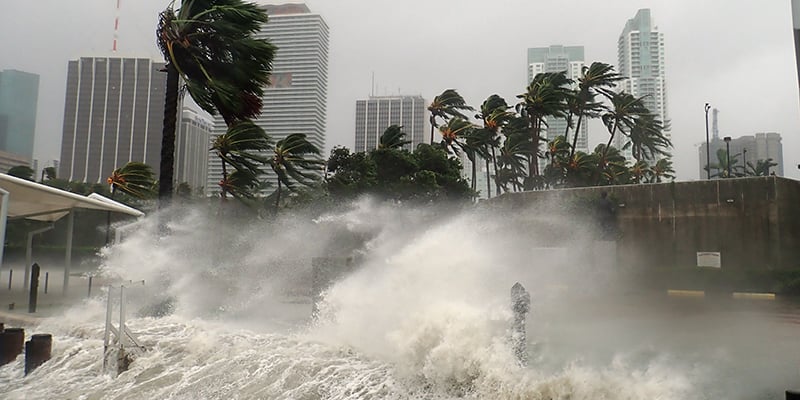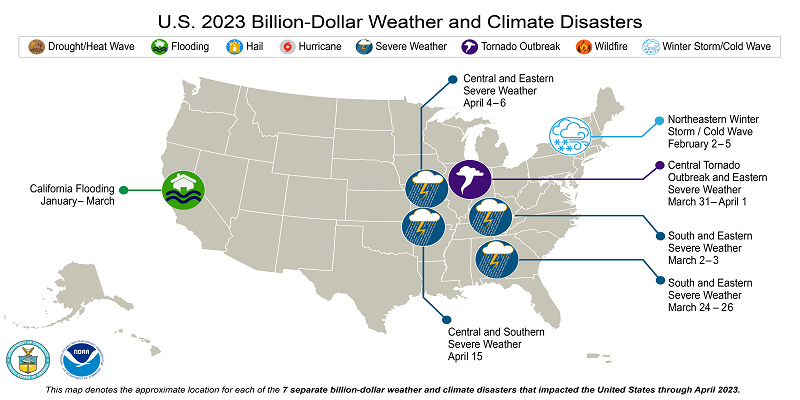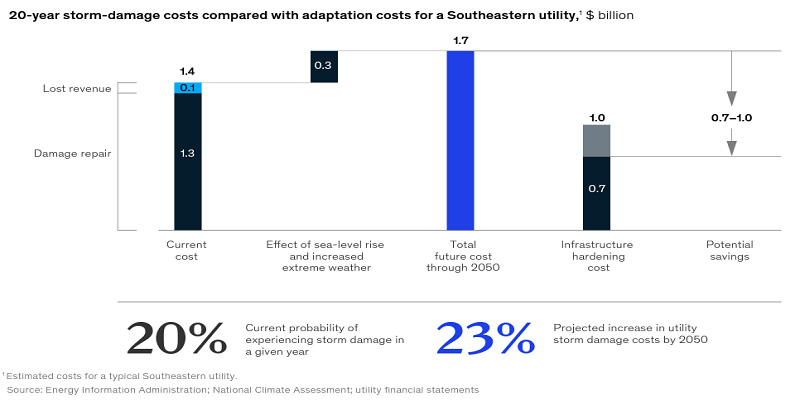Unbury the Benefits of Undergrounding
Back to TopHow changing economics impact the cost-benefit analysis of grid hardening

Severe storms have already cost the U.S. economy more than $7 billion this year. And we’re only halfway through.
With the peak of hurricane season and the start of winter around the corner, there will be more costs to come. Storm damage isn’t going away, and climate change will worsen and create more severe weather.
The aging distribution grid is particularly susceptible to these events, especially overhead lines. Utilities will see more wind, ice, and snow that cause faults or destruction on overhead lines. This increases the need to mitigate storm damage and its costs.

Rethink Grid Rebuilds
Undergrounding is one of the most effective ways to mitigate risk from storms. But are yesterday’s cost concerns about undergrounding delaying beneficial grid-hardening measures?
For decades, a common utility philosophy was to rebuild the grid after severe weather hits. But this is no longer economical or sustainable because severe storms have become more frequent. Severe weather has tipped the scales toward proactive investments in grid resilience. The U.S. Department of Energy is even administering $10.5 billion in funds for this purpose.
Severe weather also creates a cost ripple effect on society. Altogether, the economic cost of sustained outages is a whopping $26 billion per year. Society relies on power to support air conditioning, keep food fresh in the refrigerator, or to keep electric vehicles charged. Outages can also impact essential services, such as health care and grocery stores.
Build the Case for Undergrounding
The greater the severe weather threat, the greater the value of undergrounding. Undergrounding offers many benefits, and its economics are changing to make that investment attainable. These benefits are also extended to blue-sky days.
Here are examples from a cost-benefit analysis of undergrounding from S&C’s latest report:
- Lower ongoing operations and maintenance (O&M) costs: Underground lines aren’t exposed to the environment, so they don’t require repairs after every storm. The more frequent and severe weather becomes, the more O&M costs are avoided.
- Avoided interruptions and their associated costs: Undergrounding lines reduces outages, which improves resilience and reduces customer cost. As electrification grows and society becomes more digitally reliant, reducing outages has a significant impact on daily life.
- New, economical ways to underground: There are lower-cost and less-disruptive ways to underground lines, such as directional drilling. Also, undergrounding many areas means utilities can achieve economies of scales.
- Improved fault management with modern technology: Low-stress fault-testing technology eliminates the historical tradeoffs of protecting underground circuits. This technology makes it possible to test for faults on any circuit, even if it’s underground. Self-healing solutions also reduce or eliminate outages on feeders and laterals by isolating faults and rerouting power.
- Improved safety for crews and customers: Utility crews and the public avoid injury from contact with overhead lines, providing an invaluable solution.
- Improved aesthetics and increased property values: Underground lines beautify and increase the value of homes in communities. This entices new residents to move there and boosts the local economy.
What Undergrounding Means for the Future
An analysis of an average U.S. utility proves the sustainability of grid hardening. If a utility makes no changes, there would be a projected cost of $1.4 billion from storm damage over 20 years. This cost would increase to $1.7 billion with more frequent and severe weather. In contrast, the estimated $700 million to $1 billion to harden the grid is much less than the projected storm damage costs. This means the utility could save $700 million to $1 billion by undergrounding.

Utilities that harden the grid by undergrounding see reliability benefits, too. For every 10% increase in underground transmission or distribution miles, there’s a 14% SAIDI reduction. This is a win-win scenario for everyone: utilities, their customers, and regulators.
The $1 Billion Question: When Should You Underground?
Utilities must focus on grid hardening to brace for a future of frequent severe weather. Rebuilding the grid after every storm is unsustainable and too costly to continue. The benefits of undergrounding for utilities and their customers outweigh those costs. With new ways to underground lines and modern technology to protect them, there is no better time to act.